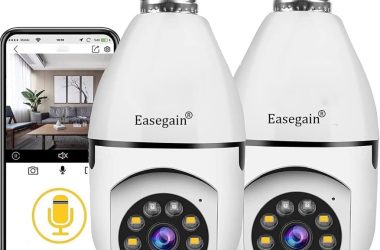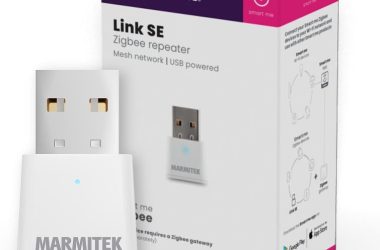Key Takeaways:
- The Philips Hue Bridge has a standard limit of 50 bulbs.
- Purchase a second Hue Bridge to accommodate more lights.
- Integrate third-party Zigbee bulbs like Osram, Cree, Innr, and Ikea’s Tradfri to expand your system.
- Uninstall third-party lab features and remove unessential routines from your Philips Hue system to free up resources.
- Exceeding the device limit can lead to decreased performance, responsiveness issues, intermittent connectivity, etc.
Hitting the 50-light ceiling on your Philips Hue Bridge can be frustrating, especially when you have a vision for a brilliantly lit home. But don’t worry, there is light at the end of the tunnel. In this post, we will dive into practical tips and tricks that will help you bypass your Hue Bridge max lights limit, ensuring that your living space shines bright, just the way you want it.

How To Bypass The Philips Hue Bridge 50 Bulbs Limit?
Here are some methods to bypass hue bridge limit:
1. Buy a Second Hue Bridge
Purchasing a second Hue Bridge is the most straightforward solution. This allows you to essentially double the number of bulbs you can control. Each bridge can manage up to 50 bulbs, so with two bridges, you can control up to 100 bulbs.
You can set up the second bridge in a different area of your home and divide your bulbs between the two bridges. This not only helps in circumventing the bulb limit but can also potentially improve the responsiveness and reliability of your smart lighting system.
What Are The Problems of Using 2 Hue Bridges?
Integrating two Philips Hue Bridges into your smart home setup can extend the bulb limit but comes with its own set of challenges:
🚫 Lack of Scalability: The Hue ecosystem may not scale well for large homes. Managing multiple hubs with numerous devices can become complex and inefficient, making the system less user-friendly for extensive setups.
⏱️ Complexity in Control: The official Philips Hue app requires switching between bridges to control lights associated with each. Since lights can only pair with one bridge, this setup complicates the control process, making it time-consuming and less intuitive.
📶 Range & Connectivity Issues: Adding a second bridge might introduce slow responses, disconnections, or trouble adding bulbs.
🔗 Integration Issues: Connecting two bridges with smart home systems can be tricky, affecting stable operation.

How To Solve The Second Bridge Problems?
Using two Hue Bridges can effectively double your bulb capacity, but it’s crucial to address these potential challenges to ensure a seamless and efficient smart lighting system. To mitigate the issues, consider the following solutions:
📱 Use Unified Control Apps: Third-party apps let you control multiple bridges without manual switching, making management easier.
📍 Strategic Placement: Place each bridge centrally in its zone for strong bulb connections and fewer connectivity issues.
🔄 Keep Firmware Updated: Regularly update bridges and bulbs to fix bugs and improve performance.
🤝 Ensure Smart Home Compatibility: Confirm your system supports multiple bridges, and use forums or support channels for setup advice.

2. Use Third-Party Bulbs
The Hue Bridge allows the connection of some third-party Zigbee bulbs, including brands like Osram, Cree, and Ikea’s Tradfri.
While this doesn’t directly increase the limit of bulbs, using third-party bulbs can be a cost-effective way to expand your system. However, compatibility and performance can vary, so it’s important to do thorough research on how well these third-party bulbs integrate with the Hue system.
3. Manage The Bulb Limit of Your Rooms
Effectively managing your smart lighting system requires strategic planning and placement of bulbs across rooms. A Philips Hue Bridge supports up to 50 bulbs for your entire home, while Bluetooth control allows for a maximum of 10 bulbs per room.
To optimize your setup:
- 💡 Plan Efficiently: Design your lighting setup to maximize bulb efficiency and ensure no single room exceeds its connectivity limit.
- 🏠 Distribute Bulbs Wisely: Spread your bulbs across different rooms to stay within the bridge or Bluetooth limits.
4. Uninstall The Third-Party Lab Features
Experimental or third-party lab features on your Hue Bridge can consume extra resources, potentially affecting its performance. To ensure your bridge operates smoothly and focuses on controlling your lights, consider disabling or uninstalling these features.
Here’s how:
- ⚙️ Free Up Resources: Removing non-essential features allows your bridge to prioritize important tasks like managing your lights efficiently.
- 🛠️ Perform a Cleanup: Open the Hue app, go to Settings, select your bridge, and clean up unnecessary or experimental features.
5. Remove Unessential Routines From The System
As you use your Philips Hue system, you might accumulate routines or automation that are no longer necessary or could be optimized. By reviewing and removing unessential routines, you can improve the efficiency of your Hue Bridge, allowing it to focus on critical tasks.
You can use the Philips Hue Bridge app to manage these routines. Simply edit or delete any automation that is not essential, ensuring that your Hue Bridge performs optimally and handles your lighting needs more effectively. Regularly tidying up your routines keeps your system running smoothly.
What is Philips Hue Max Devices Limit?
The Philips Hue Bridge’s 50 bulb limit is not strict; it can support up to 63 lights and 62 accessories. However, exceeding 50 bulbs may lead to reduced performance, so adding more bulbs should be done cautiously to avoid system lag.
However, it’s important to note that as you approach this limit, you may experience decreased performance or responsiveness in your system. If you’re close to the 50 bulb limit but not quite there, you might be able to add a few more bulbs without significant issues. However, be mindful of potential performance degradation.

What Happens When You Exceed the Hue Bridge Devices Limit?
Here are some of the consequences:
1. Decreased Performance:
The Hue Bridge is designed to support up to 50 lights and accessories for optimal performance. Exceeding this number can result in decreased performance of your smart lighting system. The bridge might struggle to maintain a stable connection with all devices, leading to slower response times when you try to control your lights.
2. Responsiveness Issues:
As the number of connected devices increases beyond the recommended limit, you might experience responsiveness issues. This means your lights may not react as quickly to your commands, or there might be a noticeable delay between your action (like pressing a switch or using an app) and the lights responding.
3. Intermittent Connectivity:
Overloading the Hue Bridge with more devices than it’s designed to handle can lead to intermittent connectivity issues. This could manifest as lights randomly turning on or off, failing to respond to scheduled routines, or becoming unreachable through the app.
4. System Instability:
Pushing the Hue Bridge beyond its limits can lead to overall system instability. This might cause frequent system crashes or necessitate regular resets to restore functionality, leading to an unreliable and frustrating smart lighting experience.
5. Impact on Other Connected Services:
If you’re using your Hue Bridge in conjunction with other smart home services or platforms, exceeding the device limit can strain the bridge’s resources, potentially affecting its ability to communicate effectively with these services.

Bypassing Philips Hue Bridge Max Lights
In exploring the Philips Hue Bridge and its capabilities, I found it clear that while the device has its limitations, there are numerous ways to enhance and expand your smart lighting system. Much like finding the right components for any home system, understanding the Philips Hue Bridge’s limitations and potential allows for a more tailored and expansive lighting experience. To conclude:
- Solutions like adding a second bridge, using third-party bulbs, and managing room limits can significantly extend your Philip Hue system’s capabilities.
- It’s important to be mindful of potential issues when exceeding the device limit, such as decreased performance and system instability.
- Regular updates, strategic placement, and the use of unified control apps can help mitigate these issues and ensure a seamless smart lighting experience.










